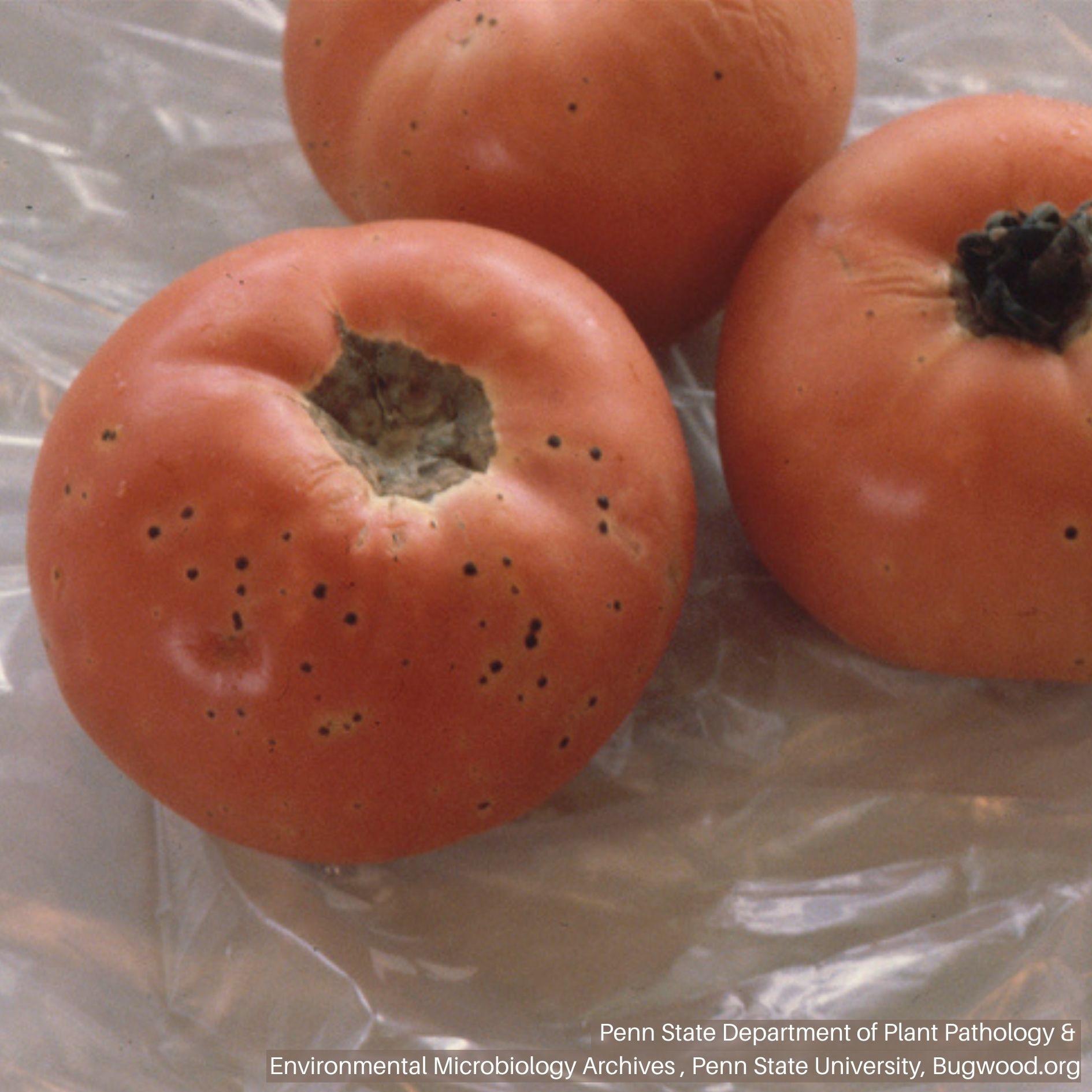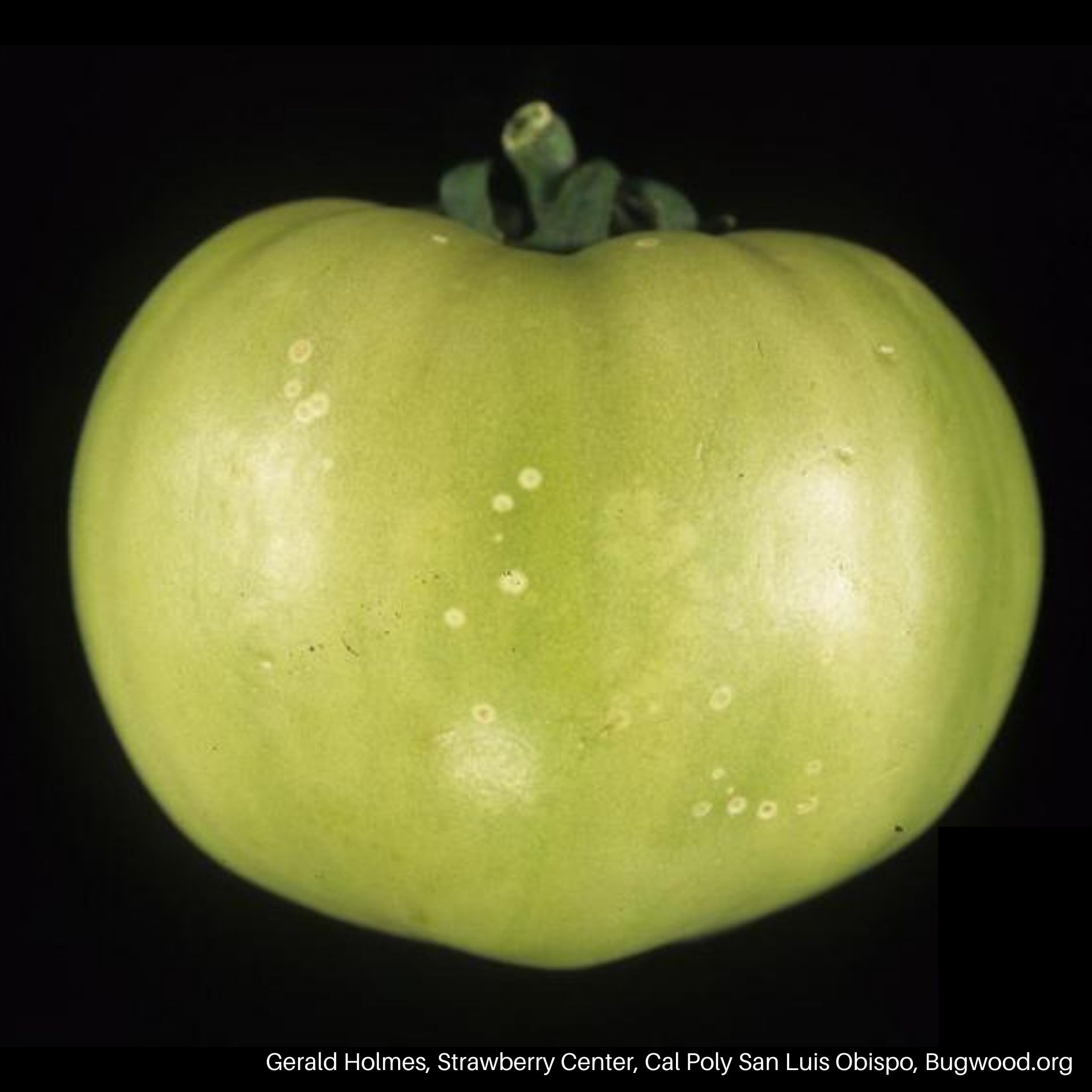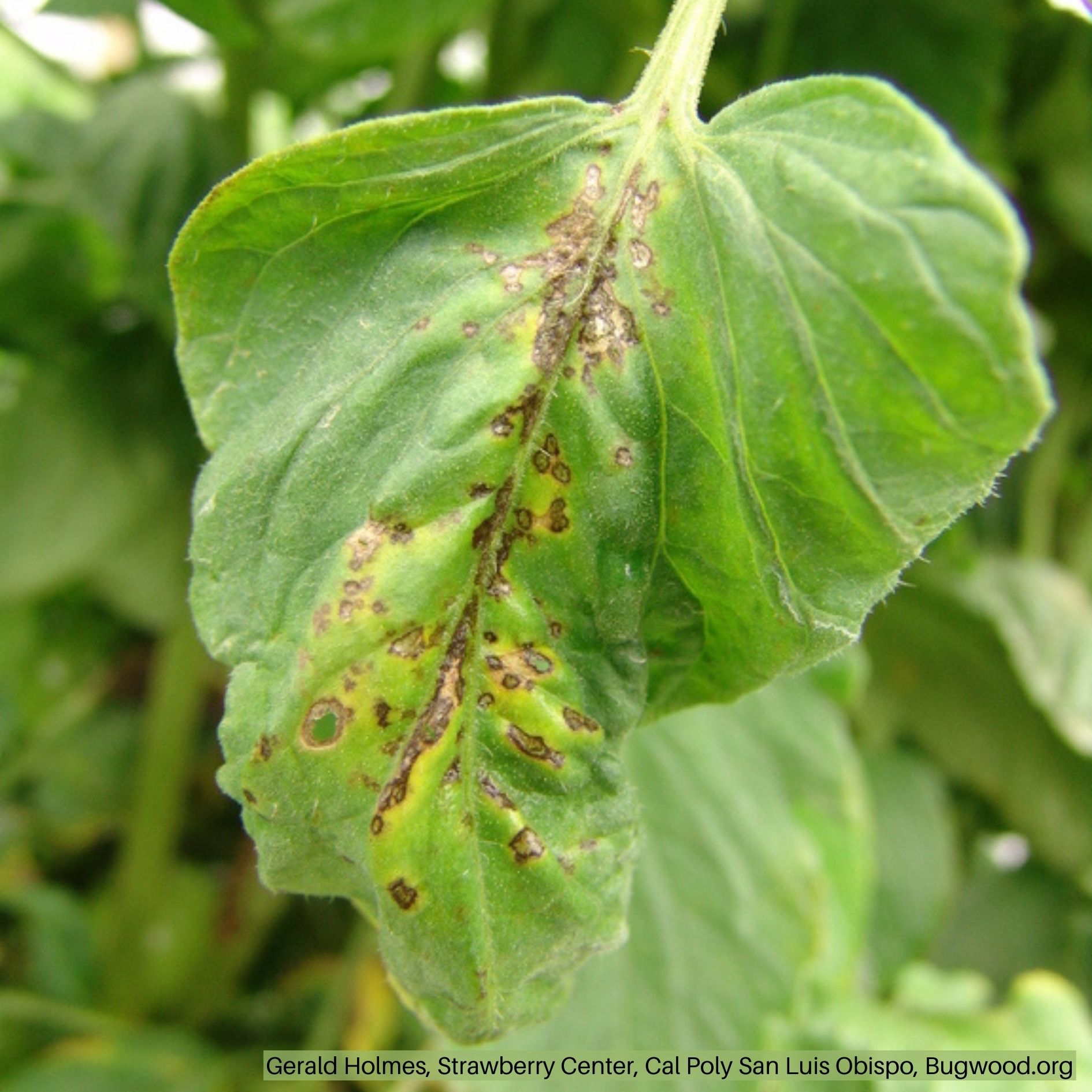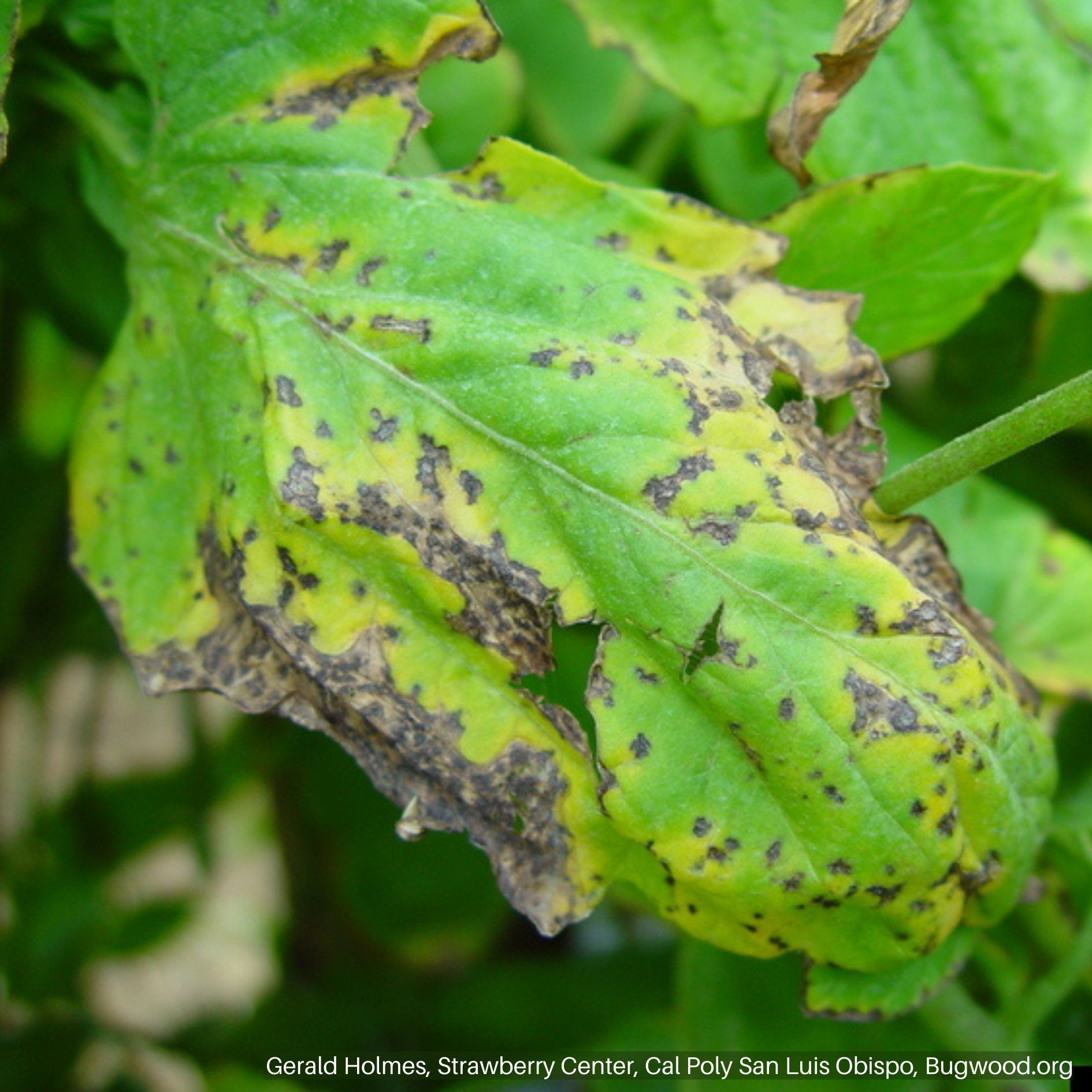Bacterial Speck
 Bacterial Speck on Tomato Fruit
Bacterial Speck on Tomato Fruit Bacterial Speck
Bacterial Speck Bacterial Speck on Tomato Foliage
Bacterial Speck on Tomato Foliage Bacterial Speck on Tomato Foliage
Bacterial Speck on Tomato FoliageHOSTS
- Tomato
BIOLOGY
Bacterial speck (Pseudomonas syringae pv. tomato) infections occur during cool (63 t 75°F) wet conditions.
Introduction to new fields occurs through infected seedlings or seeds. Bacteria spreads locally in splashing water or on field equipment and tools. Bacteria survive up to three years in plant debris, and for several months on plant stakes and equipment.
SYMPTOMS
Symptoms on leaves are concentrated near margins and are most prominent on the undersides, consisting of brown to black spots with a yellow halo. Spots on fruit are scabby, pinpoint-like, and range in color from brown to black. Damage does not penetrate into the flesh.
GENERAL MANAGEMENT
-
Bacterial speck is a minor threat in Utah.
- Start examining undersides of leaves soon after planting, especially following cool, wet weather. Continue through early summer.
- Delay planting until cool, wet conditions are over.
- Avoid overhead irrigation.
- Rotate with a non-host crop such as small grains or corn.
Precautionary Statement: Utah State University and its employees are not responsible for the use, misuse, or damage caused by application or misapplication of products or information mentioned in this document. All pesticides are labeled with ingredients, instructions, and risks, and not all are registered for edible crops. “Restricted use” pesticides may only be applied by a licensed applicator. The pesticide applicator is legally responsible for proper use. USU makes no endorsement of the products listed in this publication.

